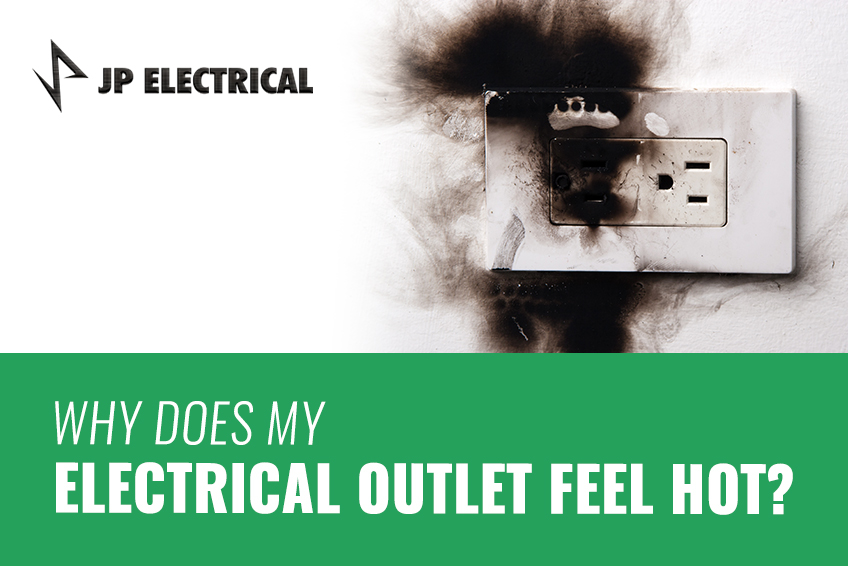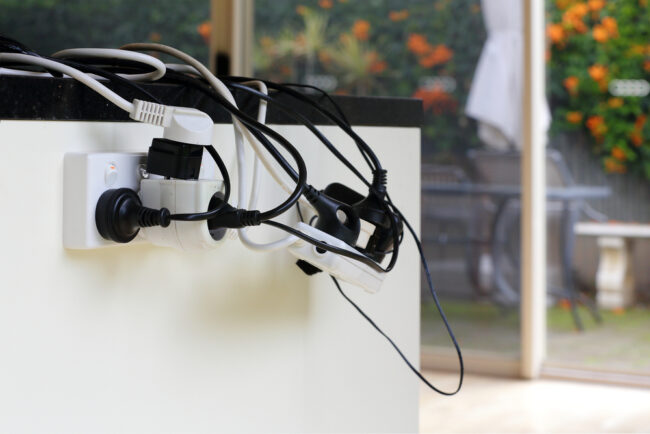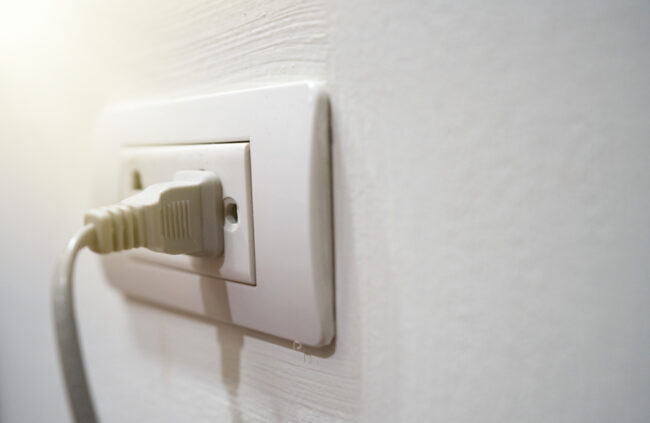Why Does My Electrical Outlet Feel Hot?
Posted on March 30, 2016 by Oozle Media
We often don’t think about our electrical outlets, but they are one of the most hardworking things in your home. They power our favorite electronics and appliances, making our lives easier. When plugging/unplugging things, you may have noticed that your outlet feels hot. This is a dangerous sign that there is a problem with your electrical system.
Reasons Your Outlet is Hot
There are a few different reasons as to why your outlet is hot to the touch. The most common reason as to why your outlet feels hot is because it’s more than likely being overworked. Every electrical outlet is designed to run a certain amount of voltage and when used beyond the limits the outlet will begin to heat up.
If you don’t have a lot of things plugged in, a hot outlet could also indicate faulty wiring inside or the casing could be unfit. If your outlet is hot, ask yourself these questions to help determine the problem.
What’s Plugged Into The Outlet?
Smaller products like phone chargers, printers, modems, and other small appliances all use wall warts (transformers) to convert AC to DC power. The process of changing the voltage inputs to different outputs causes the outlet to become warm.
To fix this, unplug the appliance, wait about an hour and check the outlet again. The outlet should be at normal room temperature. If it is hot to touch, then it needs to be replaced. Also, any outlets that appear worn, broken, cracked, or chipped are all conditions that can compromise the function and can cause the outlet to be warm.
Are Too Many Things Plugged In?
Any devices plugged into an outlet should not exceed the circuit’s demand.No single device should take more than 80% of the rated circuit. For example, when you plug two blow dryers into the same outlet or on the same circuit, that circuit should trip. In older homes, it’s common to find extension cords, outlet multipliers, extenders, and un-fused power strips. The more of these items present in your home the greater the chance of overloading an outlet.
Is There Excessive Demand on The Outlet?
Standard home electrical circuits are wired in a series where the circuit wires loop through the electrical box, terminate on the outlet, then continue to the next outlet. Meaning the electrical current being used by one outlet may pass through another receptacle on the same circuit. If the current is excessive, the outlet may be warm without anything attached to the receptacle. It’s normal to have at least one outlet in the same room to be on a different circuit, this allows you to even the load requirement into multiple electrical circuits.
Is There an Oversized Fuse or Breaker?
Older homes tend to have fewer outlets per room and circuits that are not designed to support our copious amounts of electronics. The circuit breaker should be the lowest rated item if your circuit was installed correctly with the wire in the wall being the highest. If there was an issue the circuit breaker would fail first. If a breaker was replaced with a higher ampacity breaker, the circuit can potentially become a fire risk by allowing higher level currents to pass through the circuit than it was designed for. A warm circuit is a warning sign in this case that the wiring may be operating above its rating.
How to Fix a Hot Outlet
-
-
- Identify all the receptacles associated with the warm outlet. Turn off the circuit breaker and use an outlet tester on all light fixtures and outlets to find potentially dead outlets.
- If any of the outlets have extension cords, power strips, or outlet multipliers make sure they are compatible. If you have an extension cord, ensure it is rated for its use. Replace any unfused power strips with fused power strips. Don’t chain together power strips or extensions cords. Make sure to spread out the plug load between outlets.
- Test and identify any wiring issues that may need to be resolved.
- There is a good chance the outlets are internally bad, the connections could be deteriorated or loose. Turn the electricity off and check the wiring of all your suspected outlets. Check the tightness of screw terminations, cut, or crimped wires.
- Use a digital thermometer gun with a laser sight. This can be used to scan the electrical outlet, specifically the wires to identify a rise in temperature to identify the problem.
- If you are not confident in what you are doing or still have problems, consider hiring an electrician. Electrical work is dangerous and should not be made into a guessing game.
When in doubt, always call an electrician to come and look at it. Hot outlets can lead to electrical fires, so we always recommend involving a professional. At JP Electrical, we have a full team of well-trained, certified electricians in Utah. If you’re having electrical problems, we can help! Contact us today for your quote!
Categories: Electrical Maintenance • Tips
-



